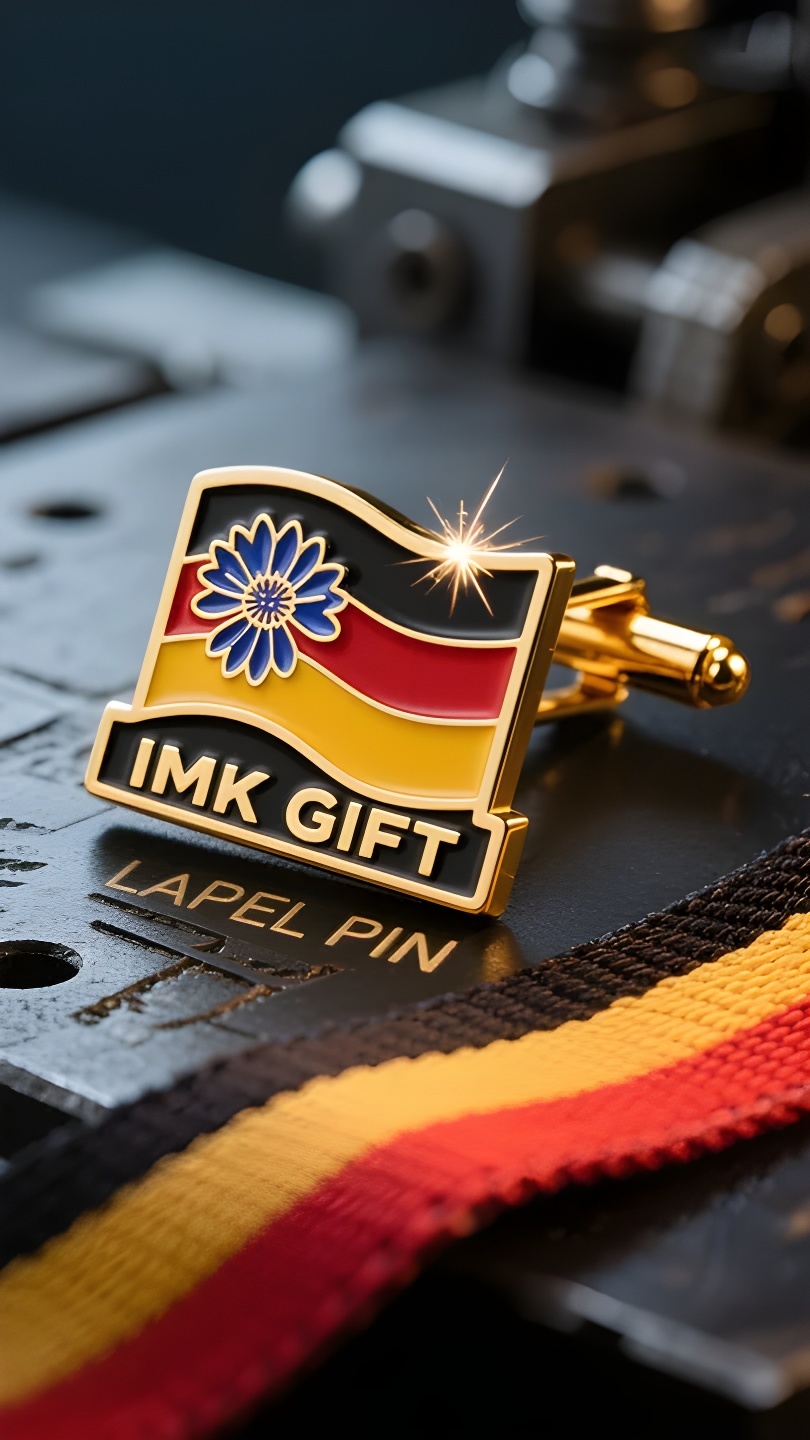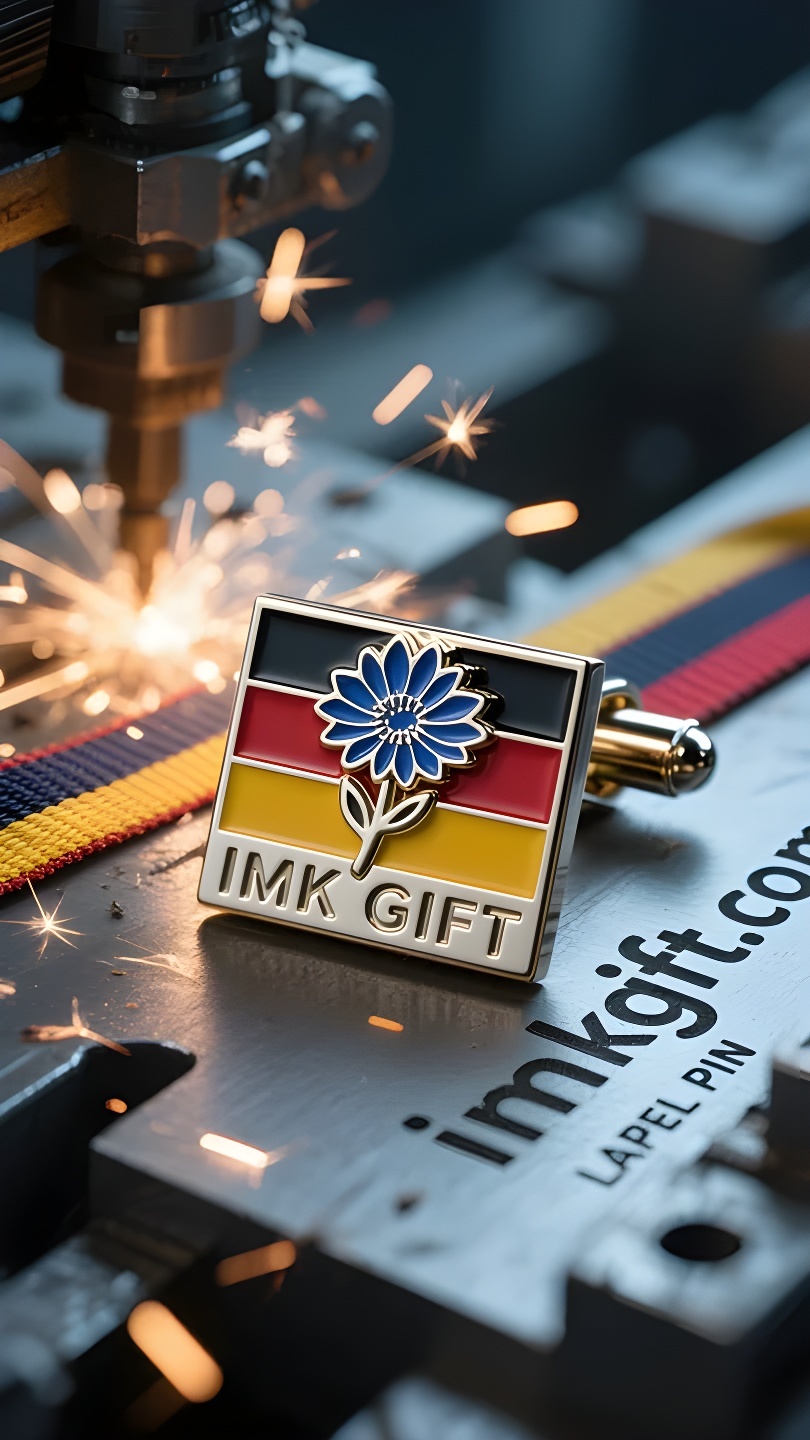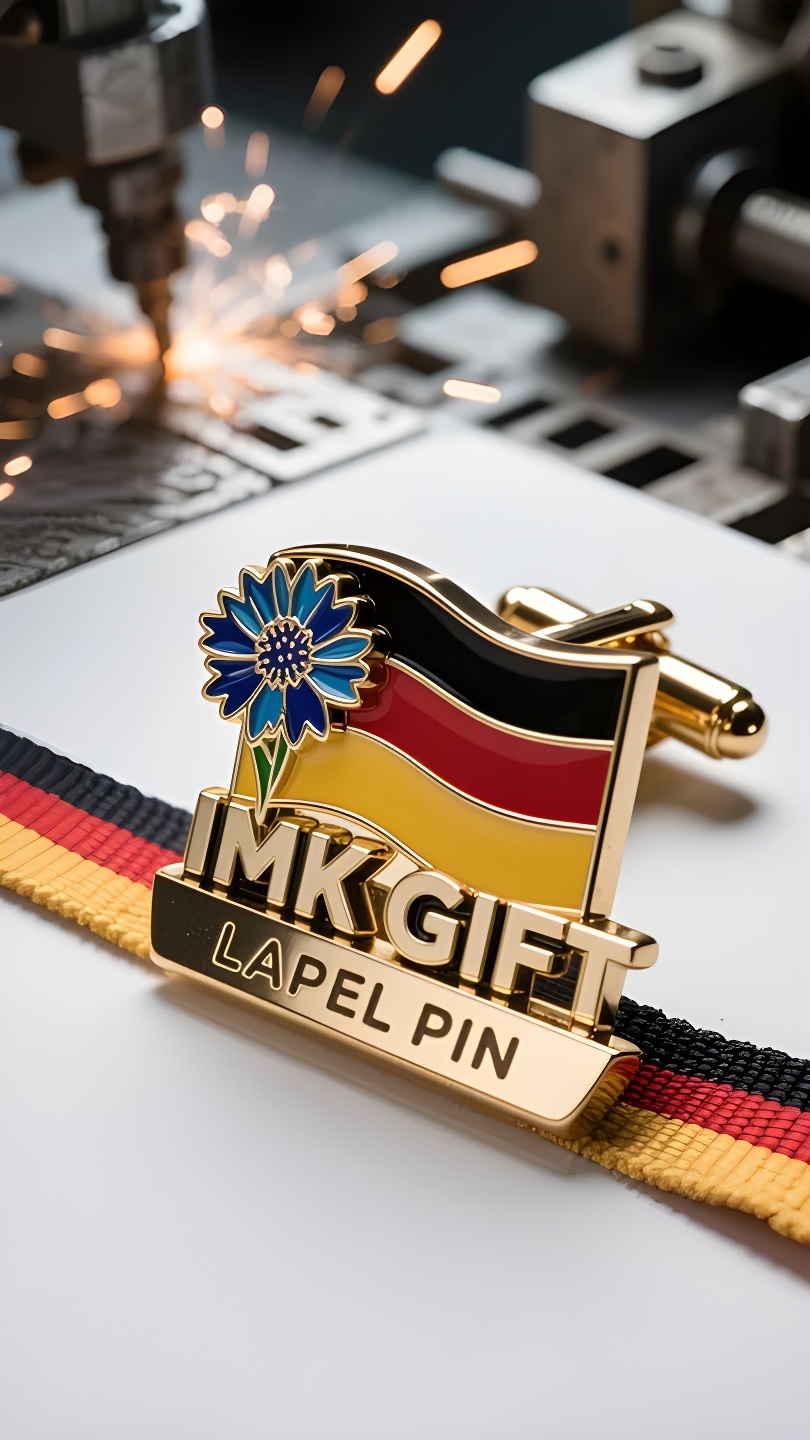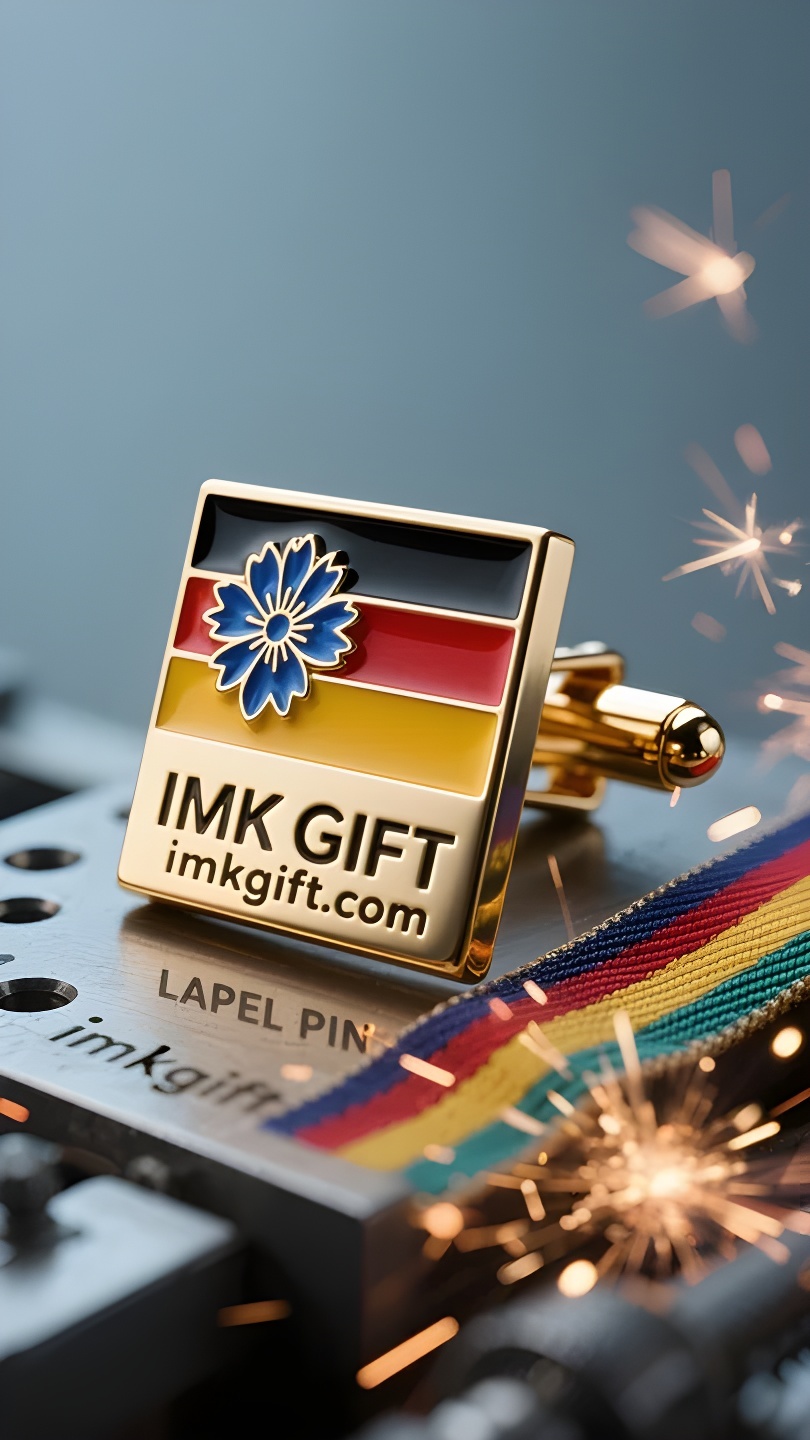in991-Kornblumen-und-Trikolore-Nationalsymbole-auf-Manschettenknöpfen
▼
Im Oktober, wenn der Tag der Deutschen Einheit naht, weht die schwarz-rot-goldene Trikolore durch die Straßen und an den Manschetten der Herren blüht leise Kornblumenblau. In dieser spätherbstlichen Jahreszeit erzählen zwei Totems, die den Nationalgeist symbolisieren, in unterschiedlicher Form von der Standhaftigkeit und Einheit Deutschlands. Das Schwarz, Rot und Gold der Trikolore entspricht dem Gründungsgeist des Landes: „Einheit, Freiheit und Ideale“, während die Kornblume als Verkörperung von „Preußischblau“ während der Napoleonischen Kriege einst zum Codewort für Rebellen wurde. Wenn diese legendäre Blume heute in Manschettenknöpfe verwandelt wird, erhält ihre Hexagrammform eine tiefere Bedeutung – jedes Blütenblatt zeigt in eine andere Richtung, kreuzt sich jedoch perfekt in der Mitte, genau wie das Streben der Bundesstaaten nach Gemeinsamkeiten, während sie gleichzeitig Unterschiede wahren; Der silberne Rand schützt nicht nur die zerbrechlichen Blütenblätter, sondern impliziert auch die Erfüllung der Freiheit durch Disziplin. Wahrer Patriotismus erfordert nicht unbedingt, die Arme zu heben und laut zu schreien. Genau wie ein Diplomat, der sorgfältig kornblumenblaue Manschettenknöpfe trägt und beim Meditieren das blaue Licht schwach zwischen seinen Ärmeln durchscheinen lässt; genau wie die Feierlichkeit der einfachen Bürger beim Glätten der Falten der Trikolore – der Nationalgeist ist in der täglichen Beharrlichkeit jedes Bürgers verborgen. Wie Goethe sagte: „Die Eiche wächst im Sturm.“ Die Geschichte des deutschen Wiederaufstiegs beweist, dass aus wenig Beharrlichkeit letztlich eine gewaltige Kraft werden kann. Wenn das Morgenlicht das Kornblumenmeer am Standort der Berliner Mauer erhellt, sehen wir: Was die Nationalflagge wirklich schützt, sind nicht nur die Bestimmungen der Verfassung, sondern auch die stillen Versprechen auf den Manschettenknöpfen von Millionen Menschen. Diese Haltung, die Totems der Familie und des Landes in ein Lebensritual zu verinnerlichen, ist möglicherweise der nachhaltigste Ausdruck des Patriotismus.
In October, the day of German unity, the black, red and gold tricolor flags fluttered in the streets, while cornflower blue was quietly blooming on the cuffs of gentlemen. In this late autumn season, the two totems symbolizing the national spirit tell the tenacity and unity of Germany in different forms. The black, red and gold of the tricolor flag correspond to the founding spirit of “unity, freedom and ideal”, while cornflowers, as the embodiment of “Prussian blue”, once became the code for rebels in the Napoleonic Wars. Today, when this legendary flower is transformed into cufflinks, its six-pointed star shape is given a deeper meaning – each petal points in a different direction, but perfectly intersects in the center, just like the federal states seeking common ground while reserving differences; the silver edging not only protects the fragile petals, but also implies the fulfillment of freedom by discipline. True patriotism does not necessarily require raising arms and shouting. Just like the diplomats who carefully wear cornflower cufflinks, letting the blue light between their sleeves loom when mediating; just like the solemnity of ordinary citizens when smoothing the folds of the tricolor flag – the national spirit is hidden in the daily persistence of every citizen. As Goethe said, “Oak trees grow in storms.” The history of Germany’s revival proves that small persistence will eventually converge into a great force. When the morning light illuminates the sea of cornflowers at the site of the Berlin Wall, we see that what truly protects the national flag is not only the provisions of the Constitution, but also the silent promises on the cufflinks of millions of people. This attitude of internalizing the totem of the country and family into a ritual of life may be the most lasting expression of patriotism.
在德国统一日来临的十月,黑红金三色旗飘扬于街巷,而矢车菊蓝正悄然绽放在绅士的袖口。这个深秋时节,两种象征民族精神的图腾以不同形式诉说着德意志的坚韧与团结。
三色旗的黑红金对应着”统一、自由、理想”的立国精神,而矢车菊作为”普鲁士蓝”的化身,曾在拿破仑战争中成为反抗者的暗号。如今,当这种传奇花朵化作袖扣,其六芒星造型被赋予更深的寓意——每个花瓣都指向不同方向,却在中心完美交汇,恰如联邦州的求同存异;银质包边既守护脆弱花瓣,又暗示纪律对自由的成全。
真正的爱国情怀,未必需要振臂高呼。就像精心佩戴矢车菊袖扣的外交官,在斡旋时让袖间蓝芒若隐若现;如同普通市民抚平三色旗褶皱时的郑重——国家精神正藏在每个公民的日常坚守里。正如歌德所说:”橡树是在暴风雨中生长的”,德意志的复兴史证明,微小的坚持终将汇成磅礴力量。
当晨光照亮柏林墙遗址的矢车菊花海,我们看见:真正守护国旗的不仅是宪法条文,更是千万人袖扣上的无声承诺。这种将家国图腾内化为生命仪节的态度,或许才是最恒久的爱国表达。
▼
Contact Us
📞 Tel: +0086-760-85286839
📧 Email: sales3@imkgift.com








